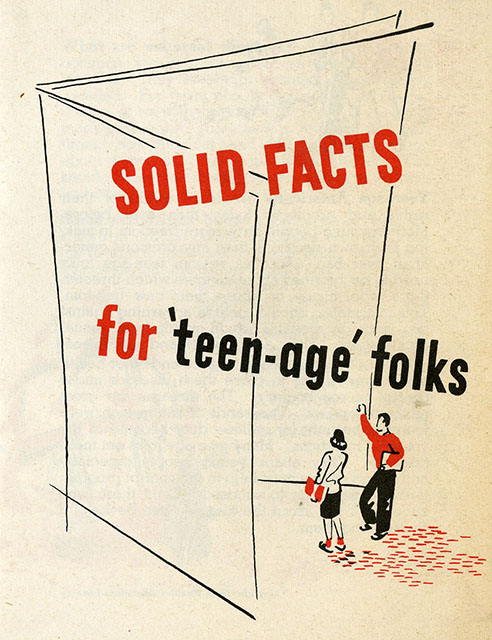Public health topics in America triggered dozens of cautionary and sermonic educational pamphlets over the years. The three featured in this post deal with sex and sexuality—often framed as America’s most uncomfortable facts of life—in various ways. These span the early to late 1940s, when war wreaked havoc on American morals and mores, and teenage “folks” were just coming into their own as a bonafide demographic.
The first, Solid Facts for ‘Teen-Age’ Folks, was published in 1948. It takes a soft approach to the subject of venereal diseases. Rather than scare the reader into submission, it posits a more liberal attitude (for its time). It also takes a curious approach, blaming Christopher Columbus for bringing the diseases he and his men caught in the New World back to Europe. No matter, whoever or whatever was the cause, “Proper sex conduct has bearing on your own happiness” was the watchword of this warning.
There is a somewhat more fearsome tone and look to this clarion of irreversible dangers. Wake Up, published by the U.S. Public Health Service, is even more typical of the traditional “Stamp Out VD” literature. Produced during World War II, when promiscuity was rampant, VD was held up as the silent killer, with otherwise healthy-looking people carrying illness and spreading it. In addition to fanning fears, leading to circumspection, this dramatically illustrated piece also suggested that carriers are not pariahs but victims who need to be cured. Kind of enlightened, in a way. Oh yeah—and watch out for those toilet seats.
Finally, published in 1944 as the war was still raging, Modess tampons’ guide to periods was one of the first to attempt to tell it like it is in positive terms. Few morals here, but there are plenty of bromides …
The post The Daily Heller: How Hygiene Was Taught appeared first on PRINT Magazine.

